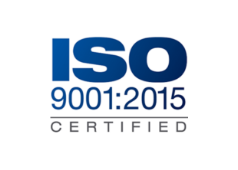Back to Blog
Backfit RCM: Optimizing Maintenance Plans the Navy Way

Aircraft carriers and submarines are more than machines with missions, they are the ocean-going versions of small cities. They are the most serious of machines designed, built, and operated to perform the most serious of tasks. Given their missions and operating environments, deploying applicable and effective maintenance plans are essential to protect the lives of their crew, to maximize their lifecycles, and to secure the safety of our country and allies.
However, maintenance plans are notoriously expensive to develop and maintain. Program offices must work with large amounts of (changing) data, from many contributors with their own preferred style guides, subject maintenance plans to multiple reviewers with their own expertise and preferred methods. So, how does the U.S. Navy ensure the maintenance plans for these assets are efficient, effective, and economical? One effective approach is that they employ Backfit Reliability Centered Maintenance (RCM) as part of their comprehensive maintenance strategy.
What is the purpose of Backfit RCM?
Backfit RCM is a methodology used to validate and optimize maintenance tasking contained within a maintenance plan. Backfit RCM accomplishes this by using a structured analysis process combined with operational and failure data to ensure current maintenance tasking is adequately preventing system and/or component failure. The methodology first looks to see if identified systems and components really experience the failure modes that the existing maintenance plans are designed to prevent. Where there is a history of system or component failures, the current tasks are analyzed for applicability and effectiveness. Where failure modes are found to not occur, or if they do not occur in the absence of preventive maintenance, then the corresponding maintenance tasks are deemed unnecessary and are removed from the maintenance plan. This core process of Backfit RCM keeps maintenance plans lean with only applicable and effective maintenance tasks.
What do you need to perform Backfit RCM?
To perform Backfit RCM, analysts should gather the following technical information for the system under analysis, as available:
- Existing documented maintenance tasks
- Previous RCM analysis data and/or worksheets
- Computerized Maintenance Management System (CMMS)/corrective maintenance work orders
- Technical manuals
- Condition Based Maintenance (CBM) data
How is Backfit RCM performed?
The Backfit RCM process follows a decision tree that buckets decisions into the areas of reliability degradation, task applicability, task effectiveness, and task optimization (refer to MIL-STD-3034A, Appendix D, Figure D-1). Within these buckets, there are seven key steps:
- Step 1 Identify the functional failures and failure modes of the system/component that an existing task is intended to prevent.
- Step 2 Determine if the failure actually occurs during the service life of the system/component. Use reliability predictions as a gauge of “probability of occurrence” and/or use failure data from the field to qualify “occurrence of failure”.
- Step 3 Determine and classify the type of maintenance task used to mitigate the failure. Is the task a condition directed, time directed, failure finding, servicing or a lubrication task?
- Step 4 Is the existing maintenance task applicable? Does the task restore or maintain the original or inherent reliability of the system/component?
- Step 5 Identify the consequences of failure. Is the task worth doing? Consider the impact of personnel injury, loss of mission capability, regulatory constraints, and economic costs.
- Step 6 Is the existing maintenance task effective? Again, is the task worth doing? Does the maintenance task reduce the probability of failure to an acceptable level? Does the maintenance task reduce the risk of failure to an acceptable level? Is the cost of the maintenance task less than the cost of corrective repair plus the cost of the lost capability?
- Listing of correct tools
- Listing of correct parts
- Needed consumables and other service materials
- Listing of the correct test equipment
- Correct man hours/mean time to repair
- Necessary PPE
- Identification of hazardous materials and disposal information
- Step 7 Can you improve the task? For instance, can you integrate Internet of Things (IOT) technology to transform a time directed task into a condition directed task to maximize economic savings? Are the maintenance task instructions aligned to the current configuration of the system/component? Task improvement includes more than the refinement of maintenance task instructions, review maintenance tasks for completeness and accuracy to include the following:
The Takeaway
Applying Backfit RCM is a proven way to efficiently review and improve maintenance plans. While the U.S. Navy utilizes this process on its largest and most complex assets, Backfit RCM can be used to improve any formal maintenance plan no matter its size or coverage of systems and components. Follow the Backfit RCM process if you’re looking for a way to ensure your maintenance plan delivers the right maintenance, to the right systems and components, and at the right time.
Article Authored by Zach Pusnik






